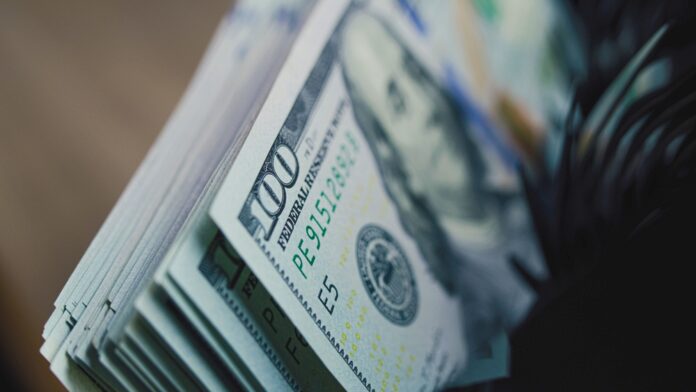The U.S. dollar tumbled on Monday following a surprise downgrade of the country’s sovereign credit rating by Moody’s, just days before a critical vote on President Donald Trump’s tax reform bill.
As of 04:20 ET (08:20 GMT), the U.S. Dollar Index — which tracks the greenback against six major currencies — had fallen 0.7% to 100.202.
Moody’s Cuts U.S. Credit Rating
Moody’s downgraded the United States’ long-held top-tier ‘AAA’ credit rating to ‘Aa1’, citing the failure of successive administrations to rein in the nation’s ballooning debt, now totaling approximately $36 trillion. Moody’s had been the last of the three major credit agencies still assigning the U.S. a ‘AAA’ rating.
The downgrade broke the dollar’s four-week winning streak, which had been driven by optimism over U.S. trade deals and a thaw in relations with China — factors that had recently eased global recession fears.
Adding to concerns, a Congressional committee approved President Trump’s sweeping tax bill on Sunday, clearing the way for a full House vote this week. Analysts estimate the legislation could add between $3 trillion and $5 trillion to the national debt over the next decade.
“The link between U.S. sovereign risk, Treasurys, and the dollar is one of capital flight,” ING analysts noted. “Are global investors shifting their portfolios away from the U.S.?”
While hard data is lagging, Friday’s release of March Treasury International Capital (TIC) data showed foreign investors were still active buyers of U.S. assets. Foreign official accounts increased their holdings of U.S. Treasurys by $26 billion — though notably, China’s holdings dropped by $19 billion.
Sterling and Euro Gain on Dollar Weakness and Positive Developments
In Europe, EUR/USD climbed 0.7% to 1.1243, buoyed by the softer dollar ahead of the eurozone’s final April CPI data. Inflation is expected to have risen 0.6% month-over-month, or 2.2% annually — figures unlikely to deter the European Central Bank from proceeding with a rate cut in June.
Investors are also closely watching Thursday’s flash PMI releases for May. ING noted, “European business sentiment has remained resilient. If that continues, the euro should stay supported as a liquid alternative to the dollar.”
Meanwhile, GBP/USD also rose 0.7% to 1.3367 after the U.K. and European Union reached a 12-year agreement on access for EU fishing boats in U.K. waters. The deal came as part of a broader summit to reset post-Brexit relations between the two sides.
“We view the closer U.K.-EU alignment as positive for sterling,” ING commented. “Any surprise progress could push EUR/GBP below 0.8400 and GBP/USD to 1.3360–1.3400.”
Asian Currencies React to Economic and Rate Signals
In Asia, USD/JPY dropped 0.5% to 144.90 after Bank of Japan Deputy Governor Shinichi Uchida signaled the central bank may continue to raise interest rates — contingent on a recovery from the anticipated economic hit of U.S. tariffs.
Japan’s economy contracted more than expected in Q1 2025, shrinking at an annualized rate of 0.7%, marking the first decline in a year.
Meanwhile, USD/CNY edged 0.1% higher to 7.2127 after data showed stronger-than-expected growth in China’s industrial production for April. However, retail sales lagged, suggesting domestic demand is under pressure despite solid export performance.
AUD/USD rose 0.3% to 0.6424, recovering some ground after a 1% decline over the previous three sessions. Markets broadly expect the Reserve Bank of Australia to cut rates by 25 basis points on Tuesday, as easing inflation gives policymakers room to address growing global risks.



